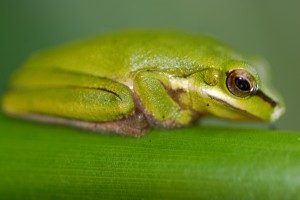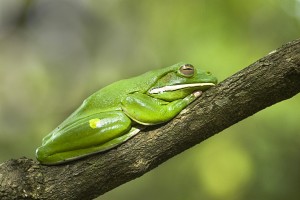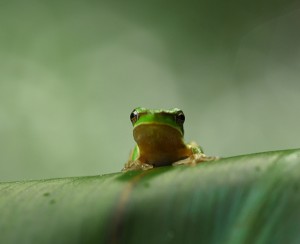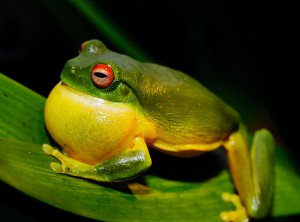October 19, 2017
Tips for photographing frogs
Without a doubt, frogs are one of my favourite creatures to photograph. These intriguing amphibians are always cute and an amazing photograph need not be a mighty feat and yet it still remains a mighty reward!
A Red-eyed Tree Frog by Danielle Lancaster
These frogs inhabit a thin coastal strip in Queensland within rainforest and wet sclerophyll forest and spend most of the year in the rainforest canopy. They come down after heavy, soaking rain to breed in shallow temporary pools. You know when they are in your garden by their long drawn out moan call.
One of the great things I love about frogs is how they act when they sense danger: they stay still. Its part of their survival behaviour to avoid being detected from predators such as snakes. This is an added bonus for photographers! Unlike other species such as mammals which hop, run, and scatter before you have even started focusing your camera; frogs freeze.
Here’s a few tips to help you capture some memorable images of these marvellous creatures.
Watch that shutter speed for camera shake! One of the biggest disappointments in frog photography is an image that is blurry due to camera shake. Can you increase you ISO, use a tripod, flash or other means to counteract this occurring?
 Don’t let camera shake spoil your image.
Don’t let camera shake spoil your image.
Sedge frog by Danielle Lancaster
Try photographing from the eye level of the frog for an image that has impact and appeal.
Be patient and know the frog’s habitat. Some frogs won’t come out to play unless it’s going to rain, been raining or not raining. Are they out at night or day? Do the live in leaf litter, rushes and trees?
Try using a polariser to increase the saturation and contrast.
Composition does count! What’s in the background, does the surrounding compliment the frogs colouring?

White-lipped Tree Frog.
Confined to the coast of Cape York Peninsula in Queensland and New Guinea, you will often find them around homes and they love in banana plantations.
They lay more than 4000 eggs at a time!
Know your Minimum Focusing Distance (MFD). That is how far your camera can be away from the subject and still get a correctly focused image. On many of the new compact cameras simply turning the dial to Macro means you can get very, very close.
Lighting is paramount! Using flash can create either brilliant images or terrible ones.
The majority of the time an off camera flash is best as frontal lighting is not the best for showing texture and frogs have textured skin.
Respect the frog and its habitat. Never harass an animal or disturb their environment.




